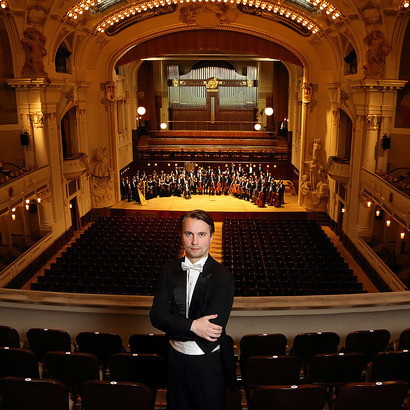To followers of Richard Wagner, the none-too-enthralling Bavarian market town of Bayreuth is the navel of the world, for that is where the master built his “theater of the future,” the Festspielhaus, specially designed for his 17-hour, four-evening epic, “Der Ring des Nibelungen.” Things might have turned out otherwise; for a time, when money was tighter than usual, the spendthrift megalomaniac considered pulling up stakes for greener pastures in Minnesota. One wonders how many of the crowned heads, fellow composers, and other glitterati who assembled for the inaugural three-“Ring” circus in August 1876 would have followed him there. Maybe not even Dom Pedro II of Brazil?
Over the years, rival shrines have cropped up with some frequency. For nearly four decades, beginning in 1975, faraway Seattle established a reputation as Bayreuth West, delivering ever improving summertime “Ring” cycles, alternating in some years with other epics from the canon. Now Brisbane, which is just about as far from Bavaria as you can get without cutting the cord to Spaceship Earth, is gearing up for a season as Bayreuth South. (Book yesterday—tickets are already disappearing fast.)
Brisbane’s bash kicks off with that narcotic rhapsody to forbidden love Tristan und Isolde, in a production by Opera Queensland (October 28 to 31, 2020). Notorious in its time for corrupting public morals, the score has also been blamed for sending high-profile performers to the grave. The first Tristan died at age 29, less than two months after the world premiere; two conductors suffered fatal heart attacks in mid-performance. But the centerpiece of the Brisbane season is a brand-new “Ring” from Opera Australia (three cycles, November 10 to December 5, 2020).
The score has also been blamed for sending high-profile performers to the grave.
For special cachet, Brisbane has hooked two big fish from Bayreuth. Out of the frying pan of his debut there, leading the summer’s new “Ring,” the rising Finnish maestro Pietari Inkinen leaps into the fire of Tristan. In the Brisbane “Ring,” the Bayreuth alumnus to watch for is the robust Heldentenor Stefan Vinke as Siegfried, who slays a dragon in the third “Ring” opera only to get speared in the back in the fourth and final installment—heavyweight assignments in which recent Bayreuth audiences have given him a hero’s welcome. (In next summer’s Bayreuth “Ring,” Vinke takes the compact but coruscating role of the trickster god Loge, a comparative walk in the park.)
Anything like a consensus on how to stage the “Ring” having cratered half a century ago, there may be no option but to go way out on a limb. In an appropriately daring move, Opera Australia has handed the staging of this monster to Chen Shi-Zheng, born in the Chinese province of Hunan in 1963, now living in New York. To Wagner’s gloomy profundities, Chen brings a sensibility that is playful, detached, and cool. Rather than plumb dark caverns of the psyche, he keeps a Zen master’s gaze on the surface patterns of the filmy bubble we call existence.
“I tend to make images,” Chen said on a recent call from New York, “to give pictures colors, to make forms that show emotions. Working with singers, I try to make them more technical, more precise in articulation. To stage the ‘Ring’ is the assignment of a lifetime. Maybe I’m too young, but I’ve been preparing for three years. Looking as an outsider, I’m quite free to find my perspective, to tell the story in a new form. I don’t want to fall into the same traps as other people.” —Matthew Gurewitsch
